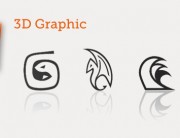Unity 3D Game Engine – Java Script – Polymorphism – Upcasting – Downcasting
Polymorphism – Upcasting – Downcasting vengono utilizzate per creare funzioni dinamiche tra classi legate da parentela padre-figlio.
Fruit Class
#pragma strict
public class Fruit
{
public function Fruit ()
{
Debug.Log("1st Fruit Constructor Called");
}
public function Chop ()
{
Debug.Log("The fruit has been chopped.");
}
public function SayHello ()
{
Debug.Log("Hello, I am a fruit.");
}
}
Apple Class
#pragma strict
public class Apple extends Fruit
{
public function Apple ()
{
Debug.Log("1st Apple Constructor Called");
}
//Apple has its own version of Chop() and SayHello().
//When running the scripts, notice when Fruit's version
//of these methods are called and when Apple's version
//of these methods are called.
//In this example, the "new" keyword is used to supress
//warnings from Unity while not overriding the methods
//in the Apple class.
public function Chop ()
{
Debug.Log("The apple has been chopped.");
}
public function SayHello ()
{
Debug.Log("Hello, I am an apple.");
}
}
FruitSalad Class
#pragma strict
function Start ()
{
//Notice here how the variable "myFruit" is of type
//Fruit but is being assigned a reference to an Apple. This
//works because of Polymorphism. Since an Apple is a Fruit,
//this works just fine. While the Apple reference is stored
//in a Fruit variable, it can only be used like a Fruit
var myFruit = new Apple();
myFruit.SayHello();
myFruit.Chop();
//This is called downcasting. The variable "myFruit" which is
//of type Fruit, actually contains a reference to an Apple. Therefore,
//it can safely be turned back into an Apple variable. This allows
//it to be used like an Apple, where before it could only be used
//like a Fruit.
var myApple = myFruit as Apple;
myApple.SayHello();
myApple.Chop();
}
Come funziona?
1. Fruit Class
– al suo interno ha i costruttori pubblici Fruit() – Chop() – SayHello()
2. Apple Class
– è una classe figlia di Fruit Class ‘… class Apple extends Fruit …’
– ha il proprio costruttore Chop() – SayHello()
3. FruitSalad Class
– la funzione Start() è la prima che si avvia al caricamento dello script
– richiama Apple().SayHello – Apple().Chop()
– fa il Downcasting a:
var myApple = myFruit as Apple;
quindi sarà richiamata Fruit().SayHello – Fruit().Chop()
Apple appartiene di sicuro alla categoria Fruit, ma non è detto che sia vero il contrario.










